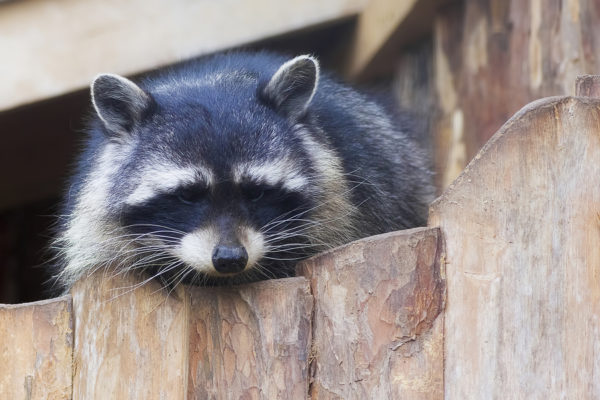Most of us have seen a raccoon, whether in person or as a cute, cuddly cartoon character. Unfortunately, these furry animals are not only dangerous to humans, but can cause significant damage and destruction to both your home and your yard. Raccoons are known to carry several bacterial diseases and parasites including rabies, salmonella, and roundworms.
Although raccoons are wild animals, they are becoming more and more common in urban areas as our population grows and their food and shelter sources diminish. They prefer to make their dens in hollowed out trees but these are fewer and far between in urban areas so they are forced to be more creative in their hunt for a home. Raccoons are now more often getting inside OUR homes, especially in the attic in search of shelter and food.
Raccoons are very dexterous animals and can use their hands to open doors, jars, bottles, and latches. They are also excellent climbers. These skills allow them to access our attics much more easily than other animals. But how do you know if you have a raccoon in or around your home? You can look for any of these signs:
- Sounds of movement in the attic like scurrying, chewing, crying, or growling, especially at night
- Tipped over trashcans
- Emptied or damaged bird feeders
- Damage to gardens
- Uncapped chimneys
- Torn shingles
- Urine or feces, especially in the attic
- Tracks which have 5 long toes and fingers, much like human prints
Once you have determined there is a raccoon in your attic, how do you get rid of it? While many people prefer to remove raccoons themselves, it’s not recommended. A wildlife removal company can not only safely remove the raccoons, but also clean up any contamination and offer exclusion methods to prevent them from returning. One thing to consider is that there is often a nest of babies along with the adult raccoon. Baby raccoons must be removed by hand. Wearing thick leather gloves, babies can be picked up by hand and carried out in a pillowcase. They can then be used to trap the adult raccoon or safely relocated. You can also trap the adult by scaring it into a pre-set trap or by catching it with a snare pole and putting it in a cage. Once the raccoons have been caught and removed, inspect your home to find entry points and then seal all areas to prevent raccoons and other pests from getting back into your home.
Most of us would prefer to avoid the process of removing raccoons (or having them removed) from our homes. So what can you do to prevent them from coming into your attic in the first place? Here are 5 tips for keeping raccoons out of your home:
- Hide your trash. Store trashcans and recycling bins indoors or in sealed areas such as locked sheds (raccoons can open unlocked doors even if they are closed). If you must keep your trashcans outdoors, use animal proof lids on them.
- Hide their food. Remove sources of food and shelter from your property. Cut down old trees that may be hollow. Remove bird feeders at night and be sure to clean underneath them. Don’t leave pet food and water containers out overnight. Keep pet food sealed and preferably inside.
- Eliminate their entry points. Inspect the outside of your home for possible access points and repair them. Look for holes in your roof or siding, loose siding and shingles, and holes in your porches or skirting. Cover chimneys with a wire mesh cover or cap. Cover any other exposed openings with wire mesh, as well. Install mesh beneath porches and decks and around your gardens. Consider crawlspace enclosure.
- Don’t forget your pets. Lock your pet doors at night. If your pets need access to outside overnight, consider investing in a pet door that operates by a remote sensor in your pet’s collar so that it stays locked until your pet activates the door.
- Light up the night. Raccoons are nocturnal animals and prefer the cover of darkness when they roam. Because most raccoons are used to humans, your regular porch light is often not enough to scare them off. Install motion-sensor floodlights in several areas around your home.

